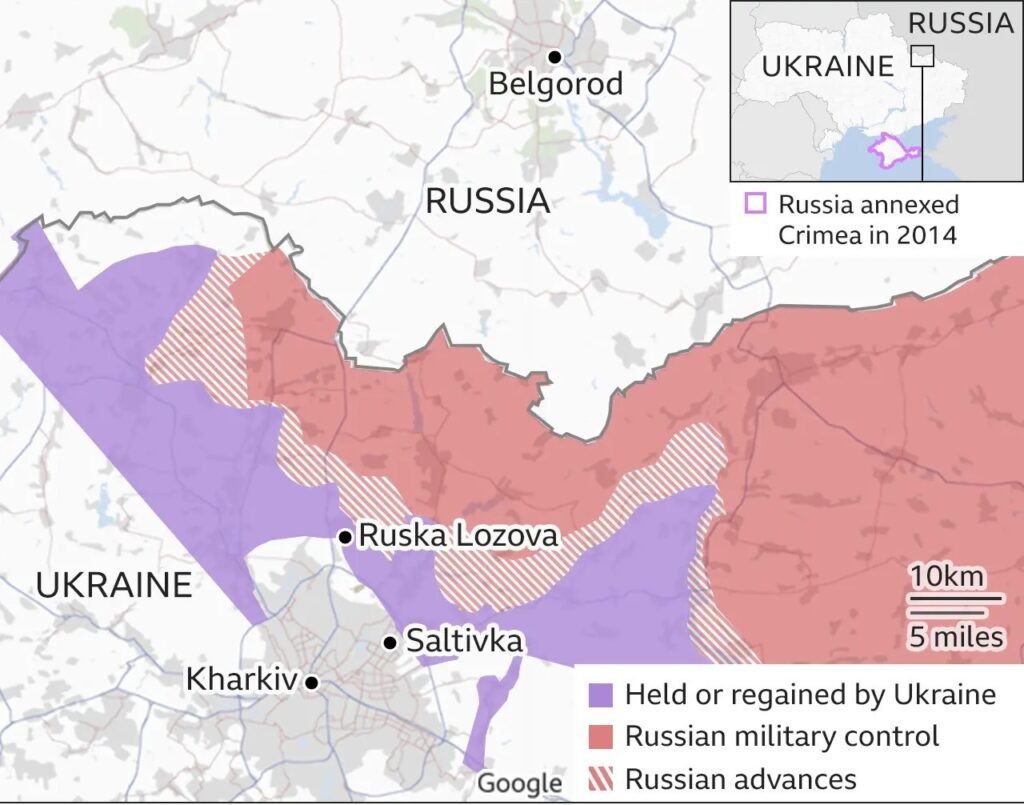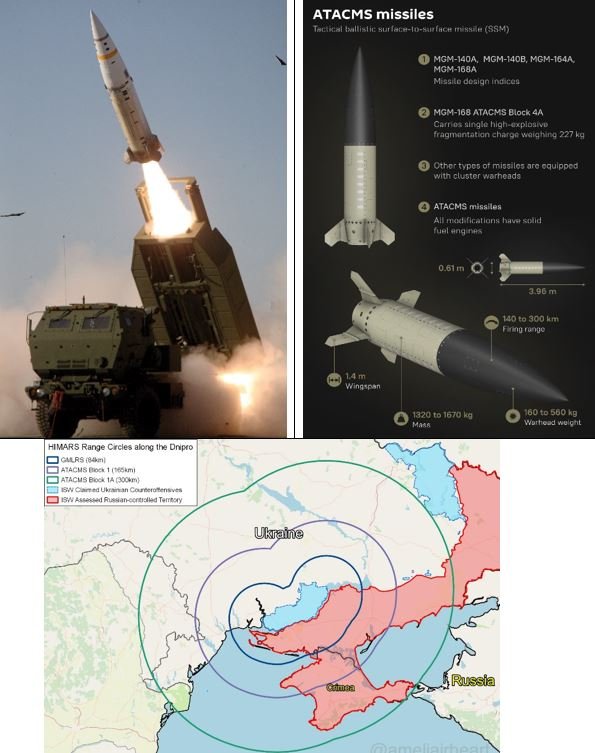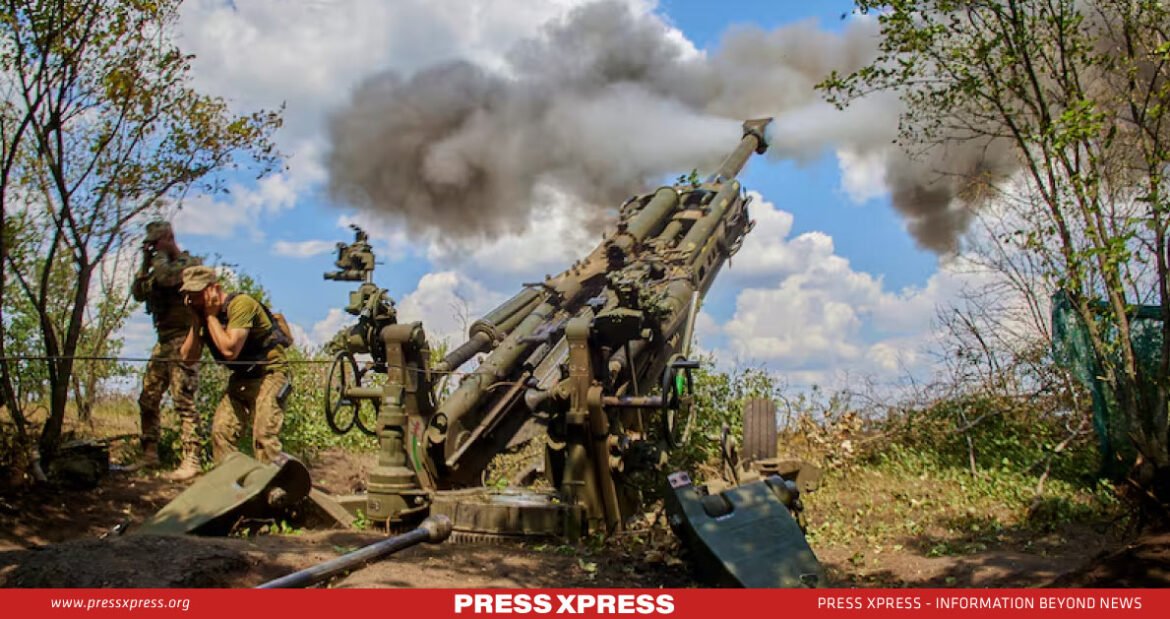President Biden has approved for Ukraine to utilize U.S. weapons in defending Kharkiv. This decision marks a shift, permitting Ukraine to target Russian forces across the border. The policy aims to counter Russian attacks on Kharkiv, a city near the Russian frontier.
You Can Also Read: UKRAINE-RUSSIA WAR: EFFECTS ON THE GLOBAL ECONOMIC LANDSCAPE
Ukrainian officials, including President Zelenskyy, have advocated for this change, deeming it essential for their defense. Secretary of State Antony Blinken and Defense Secretary Lloyd Austin supported the move, citing heightened Russian aggression near Kharkiv. This decision follows weeks of deliberation and pressure from both Ukrainian and U.S. officials. The new directive seeks to bolster Ukraine’s defensive capabilities without altering the overall U.S. policy on offensive use.
Background
Since Russia’s full-scale invasion in 2022, the U.S. prohibited Ukraine from using American weapons to strike inside Russia to avoid escalating the conflict. Ukrainian officials argued this limited their defense capabilities, especially as Russian forces amassed near Kharkiv.
The Biden administration faced pressure from Ukrainian leaders and U.S. lawmakers to lift the ban, with Ukrainian parliamentarians visiting Washington to push for policy changes. The move comes amid intensified Russian offensives in northeastern Ukraine, putting cities like Kharkiv at risk.
Strategic Importance of the Kharkiv Front
Kharkiv, Ukraine’s second-largest city, holds immense strategic value in the ongoing conflict. It is situated about 40 kilometers south of the Russian border and serves as a major economic and cultural hub. Kharkiv’s position at the intersection of key highways connecting Moscow, Rostov-on-Don, and Crimea makes logistics and military operations vital.

The city boasts a rich industrial base, producing components for power plants, aircraft, and military equipment. It also contributes significantly to Ukraine’s GDP and houses the country’s largest natural gas reserves, which are crucial for energy security.
Militarily, Kharkiv hosts several Soviet-era facilities, including an arms depot and an airbase. The city has withstood previous Russian offensives, symbolizing Ukrainian resilience. Control over Kharkiv would provide Russia with a strategic advantage, enabling them to launch deeper incursions into Ukraine.
Kharkiv’s defense is paramount for Ukraine, as losing the city would mean a significant territorial and symbolic setback. The current conflict around Kharkiv could become one of the bloodiest battles, impacting both sides profoundly.
Lifting Restrictions Will Allow Ukraine to Better Defend Kharkiv
Lifting U.S. weapon restrictions will permit Ukraine to target Russian forces across the border. This change will enable Ukraine to strike military bases and supply lines within Russian territory. These actions can disrupt Russian preparations and attacks on Kharkiv.

Russian forces have been massing troops and equipment near the border, exploiting the previous restriction that barred Ukraine from preemptive strikes. Allowing Ukraine to use U.S. weapons will help counter these threats and provide a more balanced defensive posture.
The ability to strike back at Russian artillery and missile sites will reduce the pressure on Kharkiv. This capability can help prevent further Russian advances and protect the city’s civilians. Enhanced defensive measures will strengthen Ukraine’s overall military strategy and resilience.
With U.S. support, Ukraine can better defend its territory and mitigate the risks posed by Russian offensives. This policy shift is essential for maintaining Ukraine’s territorial integrity and protecting critical infrastructure in Kharkiv.
The Conflict Will Likely Escalate as a Result
Lifting restrictions on Ukraine’s use of U.S. weapons will likely escalate the conflict. Allowing Ukraine to strike within Russian territory could provoke strong responses from Moscow. The Kremlin has already warned that such actions could lead to a broader war. Russian officials claim that NATO’s support and the use of Western weapons inside Russia increase the risk of confrontation.
Russian President Vladimir Putin has repeatedly stated that attacks on Russian territory could lead to significant escalation. This includes threats of targeting NATO members involved in supplying weapons to Ukraine. Such escalation could involve retaliatory strikes on Ukrainian cities or increased military operations along the border.
NATO officials argue that lifting restrictions is necessary for Ukraine to defend itself effectively. However, this stance is viewed by Russia as direct involvement in the conflict, potentially leading to further destabilization and increased military tensions in the region.
Can Ukraine Turn the Tide, or Will Russia Emerge Victorious?
The outcome in Kharkiv remains uncertain as both sides face significant challenges. Ukraine is reinforcing its defenses and sending reinforcements to the front. President Zelenskyy has pledged to disrupt Russian advances with additional forces and strategic planning.
Despite Ukraine’s efforts, Russia has gained ground in recent offensives, capturing villages and inflicting casualties as it aims to make further inroads. The outcome in Kharkiv will depend on Ukraine’s ability to effectively use the newly granted capabilities to strike Russian forces within Russia’s territory. Ultimately, the battle for Kharkiv will likely be prolonged and costly for both sides as the situation remains fluid with the potential for significant changes as new tactics and reinforcements come into play.
Conclusion
Biden’s decision to permit Ukraine’s use of U.S. weapons against Russian forces marks a critical shift. This change aims to bolster Ukraine’s defense, particularly in Kharkiv. However, it carries significant risks of escalating the conflict. Russia has already responded with threats of retaliation, heightening tensions further.
The situation in Kharkiv remains fluid, with both sides facing intense challenges. Whether Ukraine can maintain its ground or Russia will secure a decisive victory in the region will depend on many factors, including continued Western support and effective use of new military capabilities.


